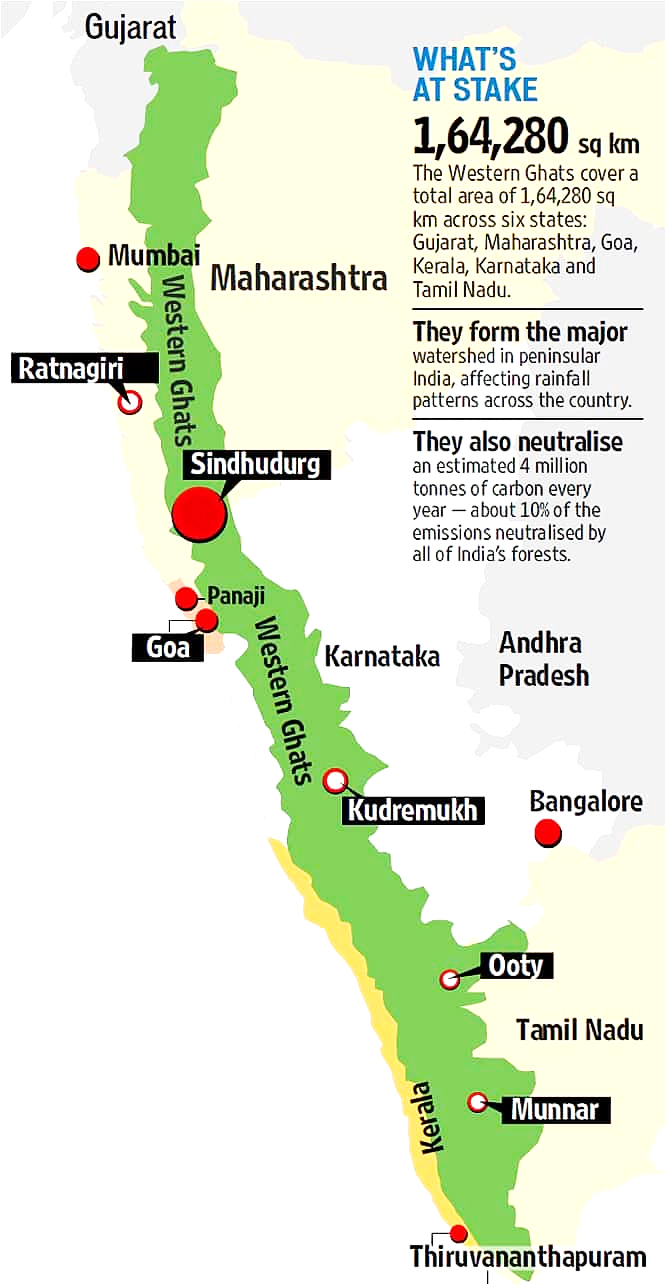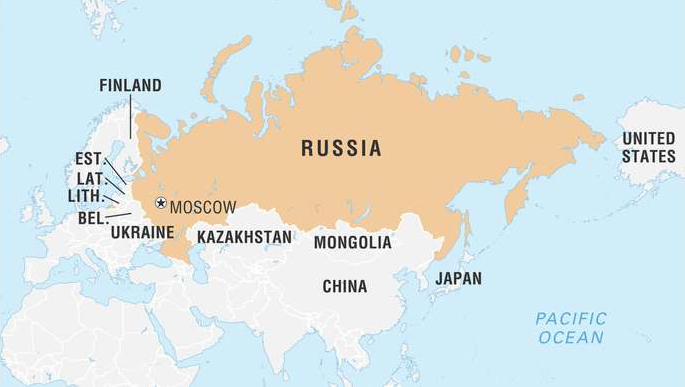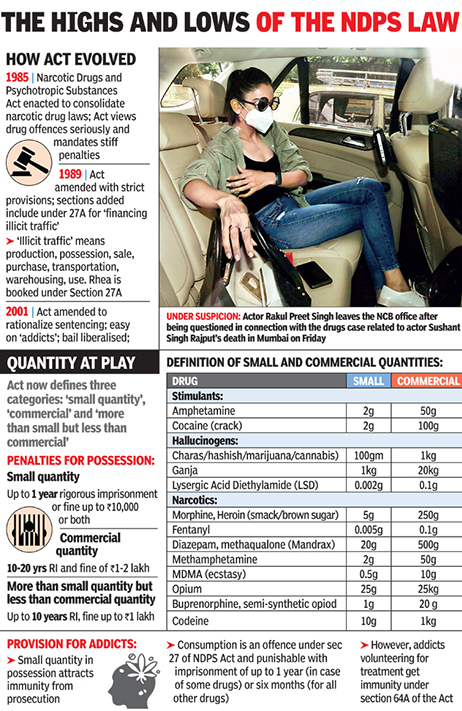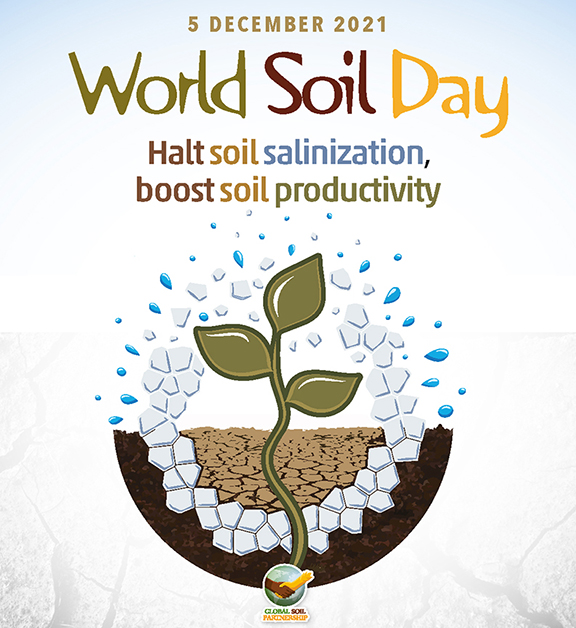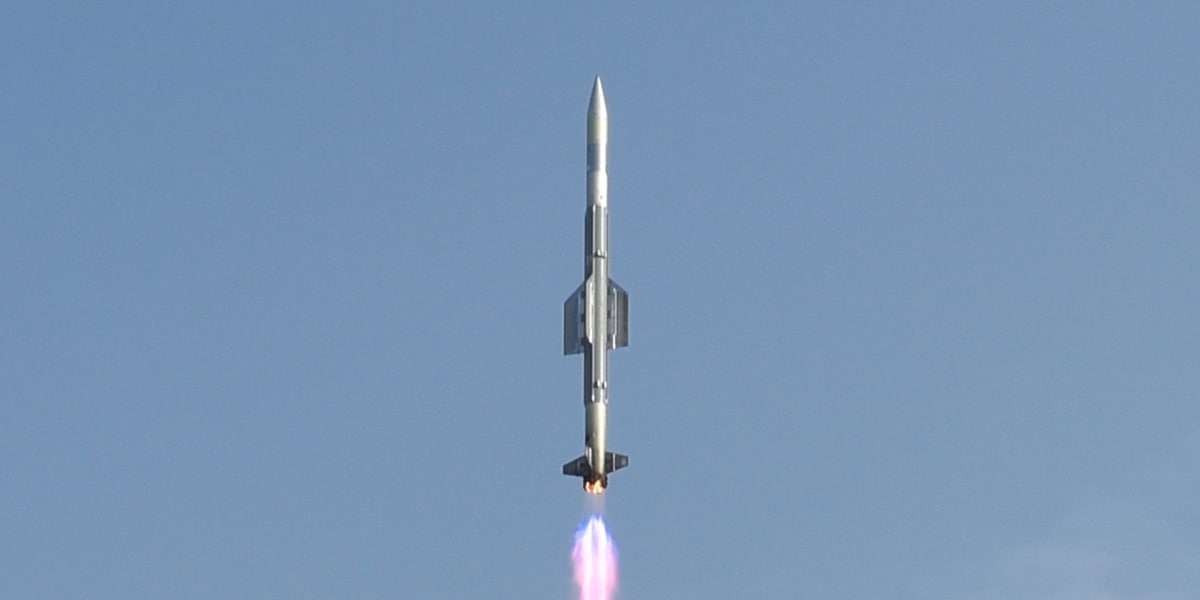World Inequality Report 2022
Why in News
According to the recently released World Inequality Report 2022, India is now among the most unequal countries in the world.
- The report was released by the World Inequality Lab, which aims to promote research on global inequality dynamics.
- This report presents the most up-to-date synthesis of international research efforts to track global inequalities.
Key Points
- Findings about the World:
- Distribution of Wealth:
- The poorest half of the global population “barely owns any wealth” possessing just 2% of the total, whereas the richest 10% of the global population own 76% of all wealth.
- The Middle East and North Africa (MENA) are the most unequal regions in the world, whereas Europe has the lowest inequality levels.
- The poorest half of the global population “barely owns any wealth” possessing just 2% of the total, whereas the richest 10% of the global population own 76% of all wealth.
- Gender Inequalities:
- Women’s share of total incomes from work (labour income) was about 30% in 1990 and is less than 35% now.
- Inequalities within countries are now greater than those observed between countries.
- At the same time, the gap between the average incomes of the top 10% and the bottom 50% of individuals within countries has almost doubled.
- Rich Countries Poor Governments:
- Over the past 40 years, countries have become significantly richer, but their governments have become significantly poorer.
- The currently low wealth of governments has important implications for state capacities to tackle inequality in the future, as well as the key challenges of the 21st century such as climate change.
- Impact of Covid Crisis on Inequality:
- The Covid-19 pandemic and the economic crisis that followed hit all world regions, but it hit them with varying intensity.
- Europe, Latin America, and South and Southeast Asia recorded the largest drops in national income in 2020 (between -6% and -7.6%) while East Asia (where the pandemic began) succeeded in stabilizing its 2020 income at the level of 2019.
- Distribution of Wealth:
- India Specific Findings:
- Distribution of Wealth:
- India stands out as a poor and very unequal country.
- The top 1% of the population hold more than one-fifth of the total national income in 2021 and the bottom half just 13%.
- The economic reforms and liberalization adopted by India have mostly benefited the top 1%.
- India stands out as a poor and very unequal country.
- Average Household Wealth:
- It stands at Rs. 983,010. It has been observed that the deregulation and liberalisation policies implemented since the mid-1980s have led to “one of the most extreme increases in income and wealth inequality observed in the world”.
- Gender Inequalities:
- The female labour income share is equal to 18% which is significantly lower than the average in Asia [21%, excluding China] and this value is one of the lowest in the world.
- Carbon inequality
- India is a low carbon emitter. The average per capita consumption of greenhouse gas is equal to just over 2 CO2e.
- Carbon dioxide equivalent or CO2e is a term for describing different greenhouse gases in a common unit.
- These levels are typically comparable with carbon footprints in sub-Saharan African countries.
- The bottom 50% consume one, the middle 40% 2 and the top10%, 9 CO2e/capita.
- A person in the bottom 50% of the population in India is responsible for, on average, five times fewer emissions than the average person in the bottom 50% in the European Union and 10 times fewer than the average person in the bottom 50% in the US.
- India is a low carbon emitter. The average per capita consumption of greenhouse gas is equal to just over 2 CO2e.
- Rise of Private Wealth:
- There has been a rise of private wealth in emerging countries such as China and India.
- China has had the largest increase in private wealth in recent decades. The private wealth increase seen in India over this time is also remarkable (up from 290% in 1980 to 560% in 2020).
- Distribution of Wealth:
- Suggestions:
- The report suggested levying a modest progressive wealth tax on multimillionaires.
- Given the large volume of wealth concentration, modest progressive taxes can generate significant revenues for governments.
- Related Reports:
- India Inequality Report 2021:
- The World Inequality Lab “India Inequality Report 2021: India’s Unequal Healthcare Story” released earlier this year shows that the socio-economic inequalities seep into the health sector and disproportionately affect health outcomes of marginalised communities due to the absence of Universal Health Coverage (UHC).
- Multidimensional Poverty Index (MPI):
- According to the recently released, Multi-dimensional Poverty Index (MPI) prepared by Niti Aayog, one in every four people in India was multidimensionally poor.
- India Inequality Report 2021:
World Inequality Lab
- About:
- It is a research laboratory focusing on the study of inequality worldwide. The WIL hosts the World Inequality Database, the most extensive public database on global inequality dynamics.
- It gathers social scientists committed to helping everyone understand the drivers of inequality worldwide through evidence-based research.
- Missions:
- The extension of the World Inequality Database
- The publication of working papers, reports and methodological handbooks
- The dissemination in academic circles and public debates
Kasturirangan Committee on Western Ghats
Why in News
Recently, the Government of Karnataka has informed the Center government that the state is opposed to the Kasturirangan Committee report on Western Ghats.
- The Kasturirangan committee report has proposed 37% of the total area of Western Ghats to be declared as Eco-Sensitive Area (ESA).
- The Karnataka's Government is of the opinion that declaring Western Ghats as ESA would adversely affect the livelihood of people in the region.
Key Points
- About Eco-Sensitive Areas:
- Eco-Sensitive Areas (ESAs) are located within 10 kms around Protected Areas, National Parks and Wildlife Sanctuaries.
- ESAs are notified by the Ministry of Environment, Forest and Climate Change (MoEFCC) under Environment Protection Act 1986.
- The basic aim is to regulate certain activities around National Parks and Wildlife Sanctuaries so as to minimize the negative impacts of such activities on the fragile ecosystem encompassing the protected areas.
- About Recommendations Of The Kasturirangan Committee Report:
- Area to be Covered: The Kasturirangan committee report proposes roughly 60,000 square kilometers, to be declared as eco-sensitive area (ESA).
- Out of this, 20,668 sq km of the area falls in Karnataka covering 1,576 villages.
- The boundary of the sites, are in most cases, boundaries of the legally demarcated national parks, wildlife sanctuaries, tiger reserves and forest divisions and therefore, already accorded with high level of protection.
- Desired and Banned Activities: The report recommended a blanket ban on mining, quarrying, setting up of red category industries and thermal power projects.
- It also stated that the impact of infrastructural projects on the forest and wildlife should be studied before permission is given for these activities.
- UNESCO Tag: It also stated that the UNESCO Heritage tag is an opportunity to build global and domestic recognition of the enormous natural wealth that exists in the Western Ghats.
- The 39 sites are located across the Western Ghats and distributed across the states (Kerala 19), Karnataka (10), Tamil Nadu (6) and Maharashtra (4).
- Role of State Governments: The state governments should view this development and build a plan to protect, conserve and value the resources and opportunities of the region.
- Area to be Covered: The Kasturirangan committee report proposes roughly 60,000 square kilometers, to be declared as eco-sensitive area (ESA).
ESA Proposed By Kasturirangan Committee
- Opposition of Karnataka Government:
- Impeding Developmental Progress: Karnataka has extensive forest cover and the government has taken care to protect the biodiversity of Western Ghats.
- The state government believes that implementation of the report will halt the developmental activities in the region.
- People-Centric Developmental Model: The Kasturirangan report has been prepared based on the satellite images, but the ground reality is different.
- People of the region have adopted agriculture and horticultural activities in an eco-friendly manner.
- Priority has been accorded for environment protection under the Forest Protection Act 1980.
- Impeding Developmental Progress: Karnataka has extensive forest cover and the government has taken care to protect the biodiversity of Western Ghats.
Way Forward
- Preventive Approach: Considering the changes in climate, which would affect the livelihood of all people and hurt the nation’s economy, it is prudent to conserve the fragile ecosystems.
- This will cost less compared to the situation prone to calamities than spending money /resources for restoration / rejuvenation.
- Thus, any further delay in the implementation will only accentuate degrading of the most prized natural resource of the country.
- Engaging With All Stakeholders: a proper analysis based on scientific study followed by consensus among various stakeholders by addressing respective concerns is required urgently.
- Holistic view of threats and demands on the forest land, products and services, devising strategies to address these with clearly stated objectives for the authorities involved must be taken.
India-Russia Summit
Why in News
Recently, the Russian President Vladimir Putin visited India. At the meeting, India signed many agreements with Russia. The meeting is significant as it was the first 2+2 meeting between the foreign and defense ministers of the two countries.
- In April 2021, to build on the common “resilient” ground, Indian and Russian Foreign Ministers addressed each other’s concerns on a wide range of issues.
Key Points
- First Indo-Russia 2+2 Dialogue: It is the first 2+2 meeting between the foreign and defense ministers of the two countries.
- India has held a 2+2 format of meetings with member nations of the Quadrilateral Security Dialogue (Quad) — the US, Japan and Australia.
- Agreement for Kalashnikov Rifles: The two sides signed two contracts for the manufacture of nearly 600,000 AK-203 rifles under a joint venture in Amethi, Uttar Pradesh.
- Agreement for Military Cooperation:The two countries also signed an agreement for military technology cooperation for the next decade, from 2021 to 2031.
- India underlined its goal of becoming Russia’s defense development and production partner from just a buyer.
- The two sides are now looking at expanding the format of exercises to make them more complex as well as Ideas for expanding India-Russia cooperation In Central Asia.
- Moving Ahead on Reciprocal Exchange of Logistics Agreement: Beyond defense sales, a Reciprocal Exchange of Logistics Agreement (RELOS), as well as a Navy to Navy cooperation MoU are at advanced stages of conclusion.
- Singing of Military Protocol: The two countries also signed the Protocol of the 20th India-Russia Inter-Governmental Commission on Military & Military Technical Cooperation (IRIGC-M&MTC).
- The IRIGC-M&MTC “is a well-established mechanism since last two decades” and provides “a platform to discuss and implement mutually agreed agenda for defense cooperation”.
- Go Ahead With S-400 Air Defense System Deal: India asserted that it follows an “independent foreign policy”, hinting at the US’ Countering America’s Adversaries Through Sanctions Act (CAATSA).
- This is referred to in the context of supply of S-400 air defence missile systems which began this month and will continue to happen.
- Discussion on Geopolitical Hotspots: The situation in Afghanistan and the Middle East has wider repercussions including for Central Asia.
- Maritime security and safety is another domain of shared concern.
- The issue of China’s aggressive posture along the northern border was also brought up at the meeting.
- Both the countries proposed greater engagements in Central Asia and the Indian Ocean Region.
Importance of Russia for India
- Balancing China: The Chinese aggression in the border areas of eastern Ladakh, brought India-China relations to an inflection point, but also demonstrated that Russia is capable of contributing to defusing tensions with China.
- Russia organized a trilateral meeting among the foreign ministers of Russia, India, and China following deadly clashes in the Galwan Valley in the disputed territory of Ladakh.
- Emerging New Sectors of Economic Engagement: Apart from traditional areas of cooperation such as weapons, hydrocarbons, nuclear energy, and diamonds, new sectors of economic engagement are likely to emerge — mining, agro-industrial, and high technology, including robotics, nanotech, and biotech.
- India’s footprint in the Russian Far East and in the Arctic is set to expand. Connectivity projects may get a boost too.
- Combating Terrorism: India and Russia are working to close the gap on Afghanistan and are calling for early finalization of the Comprehensive Convention on International Terrorism.
- Support At Multilateral Forums: Additionally, Russia supports India’s candidacy for permanent membership of a reformed United Nations Security Council and of the Nuclear Suppliers Group.
- Russia’s Military Exports: Russia has been one of the largest arms exporters to India. Even as Russia’s share in India’s arms imports fell by over 50% in the last five-year period compared to the previous five years (2011–2015).
- In the last 20 years, India imported arms and weapons worth USD 35 billion from Russia, according to the Stockholm International Peace Research Institute which tracks global arms trade.
Way Forward
- Russia To Provide Timely Maintenance Support: Timely supply of spares and support to the large inventory of Russian hardware in service with the Indian military has been a major issue from India.
- To address this,Russia has made legislative changes allowing its companies to set up joint ventures in India to address it following an Inter-Governmental Agreement signed in 2019.
- This agreement needs to be implemented in a time bound manner.
- Acknowledging Importance of Each Other: Russia will remain a key defense partner for India for decades to come.
- On the other hand, Russia and China are currently in a quasi-alliance setup. Russia repeatedly reiterates that it does not see itself as anybody’s junior partner. That’s why Russia wants India to act as a balancer.
- Joint Military Production: The two countries have been discussing how they can cooperate in using India as a production base for exporting to third countries Russian-origin equipment and services.
World Human Rights Day
Why in News
Every year Human Rights Day is celebrated on 10th December all around the world.
- Freedom in the World 2021 report released earlier this year had downgraded India’s status from ‘Free’ to ‘Partly Free’.
Key Points
- World Human Rights Day:
- About:
- On that day, the United Nations General Assembly adopted, in 1948, the Universal Declaration of Human Rights (UDHR).
- The UDHR established a set of common basic values both with regard to the view of human beings and to the relationship between the state and the individual.
- On that day, the United Nations General Assembly adopted, in 1948, the Universal Declaration of Human Rights (UDHR).
- Theme 2021:
- “EQUALITY – Reducing inequalities, advancing human rights” .
- Objective:
- To promote equality, peace, justice, freedom and the protection of human dignity. Every individual is entitled to rights irrespective of race, colour, religion, sex, language, or social status.
- About:
- Human Rights:
- These are rights inherent to all human beings, regardless of race, sex, nationality, ethnicity, language, religion, or any other status.
- These include the right to life and liberty, freedom from slavery and torture, freedom of opinion and expression, the right to work and education, and many more.
- Nelson Mandela had stated ‘To deny people their human rights is to challenge their very humanity’.
- International Human Rights Conventions and Bodies:
- Universal Declaration of Human Rights (UDHR):
- The 30 rights and freedoms include civil and political rights, like the right to life, liberty, free speech and privacy and economic, social and cultural rights, like the right to social security, health and education, etc.
- India took an active part in drafting of the UDHR.
- The UDHR is not a treaty, so it does not directly create legal obligations for countries.
- The UDHR, together with the International Covenant on Civil and Political Rights and its two Optional Protocols (on the complaints procedure and on the death penalty) and the International Covenant on Economic, Social and Cultural Rights and its Optional Protocol, form the so-called International Bill of Human Rights.
- The 30 rights and freedoms include civil and political rights, like the right to life, liberty, free speech and privacy and economic, social and cultural rights, like the right to social security, health and education, etc.
- Other Conventions:
- These include the Convention on the Prevention and Punishment of the Crime of Genocide (1948), the International Convention on the Elimination of All Forms of Racial Discrimination (1965), the Convention on the Elimination of All Forms of Discrimination against Women (1979), the Convention on the Rights of the Child (1989) and the Convention on the Rights of Persons with Disabilities (2006), among others.
- India is a party to all these Conventions.
- These include the Convention on the Prevention and Punishment of the Crime of Genocide (1948), the International Convention on the Elimination of All Forms of Racial Discrimination (1965), the Convention on the Elimination of All Forms of Discrimination against Women (1979), the Convention on the Rights of the Child (1989) and the Convention on the Rights of Persons with Disabilities (2006), among others.
- Human Rights Council:
- The Human Rights Council is an inter-governmental body within the United Nations system responsible for strengthening the promotion and protection of human rights. It is made up of 47 United Nations Member States which are elected by the UN General Assembly.
- The most innovative feature of the Human Rights Council is the Universal Periodic Review. This unique mechanism involves a review of the human rights records of all 192 UN member states once every four years.
- The Office of the High Commissioner for Human Rights (OHCHR) serves as the secretariat for the Human Rights Council.
- Amnesty International:
- An international organisation of volunteers who campaign for human rights. This organisation brings out independent reports on the violation of human rights all over the world.
- Universal Declaration of Human Rights (UDHR):
Human Rights in India
- Enunciated in the Constitution:
- Since inception, the Indian Constitution incorporated most of the rights enumerated in the Universal Declaration in two parts, the Fundamental Rights and the Directive Principles of State Policy.
- Fundamental Rights: Articles 12 to 35 of the Constitution. These include the Right to Equality, Right to Freedom, Right Against Exploitation, Right to Freedom of Religion, Cultural & Educational Rights, Saving of Certain Laws and Right to Constitutional Remedies.
- Directive Principles of State Policy: Article 36 to 51 of the Constitution. These include 'right to social security, right to work, to free choice of employment, and protection against unemployment, right to equal pay for equal work, right to existence worthy of human dignity, right to free & compulsory education, equal justice & free legal aid and the principles of policy to be followed by the State.'
- Since inception, the Indian Constitution incorporated most of the rights enumerated in the Universal Declaration in two parts, the Fundamental Rights and the Directive Principles of State Policy.
- Statutory Provisions:
- Protection of Human Rights Act, 1993 (as amended in 2019) provided for the constitution of a National Human Rights Commission at the Union level, which steers State Human Rights Commission in States and Human Rights Courts for better protection of Human Rights and for matters connected therewith or incidental thereto.
- Related Initiatives:
- For Poor:
- For Women:
- For trans-genders:
- Children:
- Divyang Jan:
- Migrants:
- For Poor:
NDPS (Amendment) Bill, 2021
Why in News
Recently, the NDPS (Amendment) Bill, 2021 was introduced in the Lok Sabha.
- The bill will amend the Narcotic Drugs and Psychotropic Substances Act, 1985.
Narcotic Drugs and Psychotropic Substances Act, 1985
- The Act regulates certain operations - such as manufacture, transport and consumption - related to narcotic drugs and psychotropic substances.
- Under the Act, financing certain illicit activities such as cultivating cannabis, manufacturing narcotic drugs or harbouring persons engaged in them is an offence.
- Persons found guilty of this offence will be punished with rigorous imprisonment of at least 10 years - extendable up to 20 years - and a fine of at least Rs.1 lakh.
- It also provides for forfeiture of property derived from, or used in, illicit traffic in narcotic drugs and psychotropic substances.
- It also provides for death penalty in some cases where a person is a repeat offender.
- The Narcotics Control Bureau was also constituted in 1986 under the Act.
Key Points
- About the Bill:
- The bill would replace an ordinance promulgated earlier this year (2021) to correct a drafting error in a 2014 amendment to the Act.
- Before the 2014 amendment, clause (viii-a) of Section 2 contained sub-clauses (i) to (v), which defined the term “illicit traffic”.
- In 2014, the Act was amended and the clause number of the definition for such illicit activities was changed.
- However, the section (27A) on penalty for financing these illicit activities was not amended and continued to refer to the earlier clause number of the definition.
- The ordinance amended the section on penalty to change the reference to the new clause number.
- In a recent judgment, Tripura High Court has held that ‘until the appropriate legislative change occurs by amending Section 27A of the NDPS Act appropriately, sub-clauses (i) to (v) of clause (viii-a) of Section 2 of the NDPS Act shall suffer effect of deletion.
- The bill would replace an ordinance promulgated earlier this year (2021) to correct a drafting error in a 2014 amendment to the Act.
Section 27A of the NDPS Act
- The provision reads that whoever indulges in financing, directly or indirectly, any of the activities specified in sub-clauses (i) to (v) of clause (viiia) of section 2 or harbours any person engaged in any of the aforementioned activities.
- He shall be punishable with rigorous imprisonment for a term which shall not be less than ten years but which may extend to twenty years and shall also be liable to fine which shall not be less than one lakh rupees but which may extend to two lakh rupees:
- Provided that the court may, for reasons to be recorded in the judgment, impose a fine exceeding two lakh rupees.
Reason of Section 27A getting Inoperable
- The text of the provision says that offences mentioned under Section 2 (viiia) sub-clauses i-v are punishable through Section 27A.
- However, Section 2 (viiia) sub-clauses i-v, which is supposed to be the catalog of offences, does not exist after the 2014 amendment.
- So, if Section 27A penalises a blank list or a non-existent provision, it can be argued that it is virtually inoperable.
- Objective of the Bill:
- To help victims of drug abuse to come out of addiction.
- To Decriminalise possession of a limited quantity of drugs for personal use while regulating certain operations such as manufacturing, transport and consumption of narcotic drugs and psychotropic substances.
- Concerns Related to the Bill:
- The new provision is giving retrosp ective effect from 1st May 2014.
- That means a criminal provision is given, which will not hold in good law.
- It also violates the fundamental rights in Article 20 because a person can be punished for an offence for which there is a law in existence at the time of commission of the offence.
- The new provision is giving retrosp ective effect from 1st May 2014.
Initiatives to Tackle Drug Addiction
- Narco-Coordination Centre: The Narco-Coordination Centre (NCORD) was constituted in 2016 and the scheme of “Financial Assistance to States for Narcotics Control” was revived.
- Seizure Information Management System: Narcotics Control Bureau has been provided funds for developing a new software i.e. Seizure Information Management System (SIMS) which will create a complete online database of drug offences and offenders.
- National Drug Abuse Survey: The government is also conducting a National Drug Abuse Survey to measure trends of drug abuse in India through the Ministry of Social Justice & Empowerment with the help of National Drug Dependence Treatment Centre of AIIMS.
- Project Sunrise: It was launched by the Ministry of Health and Family Welfare in 2016, to tackle the rising HIV prevalence in north-eastern states in India, especially among people injecting drugs.
- NDPS Act: It prohibits a person from producing, possessing, selling, purchasing, transporting, storing, and/or consuming any narcotic drug or psychotropic substance.
- The NDPS Act has since been amended thrice – in 1988, 2001 and 2014.
- The Act extends to the whole of India and it applies also to all Indian citizens outside India and to all persons on ships and aircraft registered in India.
- Nasha Mukt Bharat: Government has also announced the launch of the ‘Nasha Mukt Bharat’, or Drug-Free India Campaign which focuses on community outreach programs.
World Soil Day
Why in News
Recently, ICAR (Indian Council of Agricultural Research) – Central Coastal Agricultural Research Institute (CCARI) celebrated ‘World Soil Day’ (WSD) on 5th December 2021.
Key Points
- It was recommended by the International Union of Soil Sciences (IUSS) in 2002. The Food and Agriculture Organisation (FAO) has supported the formal establishment of WSD as a global awareness-raising platform under the leadership of the Kingdom of Thailand within the framework of the Global Soil Partnership.
- 5th December 2014 was designated as the first official WSD by the UN General Assembly (UNGA).
- 5th December was chosen because it corresponds with the official birthday of H.M. King Bhumibol Adulyadej, the King of Thailand, who officially sanctioned the event.
- FAO gives two awards in line with this day:
- The King Bhumibol World Soil Day Award: An annual award that honours individuals, communities, organizations and countries that organized remarkable and engaging World Soil Day activities or campaigns in the previous year.
- The Glinka World Soil Prize: An annual award for dynamic change-makers dedicated to solving one of our world’s most pressing environmental issues: soil degradation. It honors individuals and organizations whose leadership and activities have contributed, or are still contributing to the promotion of sustainable soil management and the protection of soil resources.
- India Initiatives to Improve Soil Health:
- Soil Health Card Scheme
- Organic Farming
- Paramparagat Krishi Vikas Yojana
- Fertilizer Self-Sufficiency
- Digital Agriculture
- Carbon Farming
- The Nutrient Based Subsidy (NBS) Scheme
Reports of Global Arms Trade: SIPRI
Why in News
According to a report by Stockholm International Peace Research Institute (SIPRI), which tracks global arms trade, three Indian companies are among the world’s top 100 for combined arms sales in 2020.
- The three Indian companies are Hindustan Aeronautics Limited (HAL), Indian Ordnance Factories, and Bharat Electronics Limited (BEL).
- The three were ranked among the top 100 in arms sales in 2019 as well.
The Stockholm International Peace Research Institute
- The SIPRI is an independent international institute dedicated to research into conflict, armaments, arms control and disarmament.
- Established in 1966 at Stockholm, SIPRI provides data, analysis and recommendations, based on open sources, to policymakers, researchers, media and the interested public.
Key Points
- Top Countries:
- The USA has the highest number of companies in the top 100 worldwide.. Together, their arms sales amounted to USD 285 billion, an increase of 1.9 % compared with 2019.
- China was second at 13 %, followed by the UK at 7.1 %.
- Russia and France were fourth and fifth with 5 % and 4.7 % respectively of the combined arms sales for the top 100 companies.
- Indian Companies:
- Indian Ordnance Factories are at the 60th spot, with USD 1.9 billion in sales, up 0.2 % from the previous year.
- HAL is at number 42 with USD 2.97 billion, up 1.5 % from 2019 sales.
- BEL is ranked 66, with USD 1.63 billion in arms sales, up 4 % compared to 2019.
- India’s share of arms sales globally in 2020 was 1.2 %. Their aggregated arms sales of USD 6.5 billion were 1.7 % higher in 2020 than in 2019” and accounted for 1.2 % of the top 100 total.
- Factors for Increasing India’s Share in Arm Sales:
- Domestic procurement has helped to shield Indian companies against the negative economic consequences of the pandemic.
- In 2020, the Indian Government announced a phased ban on imports of more than a hundred different types of military equipment to support domestic companies and enhance self-reliance in arms production.
Vertical Launch Short Range Surface to Air Missile: DRDO
Why in News
The Vertical Launch Short Range Surface to Air Missile (VL-SRSAM) was successfully flight tested by the Defence Research & Development Organization (DRDO) for the second consecutive time since February this year.
- It was launched from the Integrated Test Range at Chandipur.
Key Points
- About the VL-SRSAM:
- It is a quick reaction surface-to-air-missile indigenously designed and developed by DRDO for the Indian Navy, is meant for neutralising various aerial threats at close ranges, including sea-skimming targets.
- The missile has an operational range of 50 to km distance and features mid course inertial guidance through fiber optic gyroscope and active radar homing in terminal phase
- The launch of the system was conducted to validate integrated operation of all weapon system components, including the vertical launcher unit with controller, canisterised flight vehicle and weapon control system.
- The successful testing of these systems is crucial for future launches of the missile from Indian Naval ships.
- It will further boost the defence capability of Indian Naval Ships against aerial threats. It has also paved the way for integration of weapon systems onboard the Indian naval ships.
- Developed By:
- The key DRDO facilities that contributed to the development of the system are the Defence Research and Development Laboratory (DRDL) and Research Centre Imarat (RCI), both from Hyderabad, and Research & Development Establishment (Engineers), based at Pune.
Defence Research & Development Organization:
- It is the Research & Development wing of the Ministry of Defence, with a vision to empower India with cutting-edge defence technologies.
- It was established in 1958 after combining the Technical Development Establishment (TDEs) of the Indian Army and the Directorate of Technical Development & Production (DTDP) with the Defence Science Organization (DSO).


